Difference between two stroke engine and four stroke engineThe distinction between the two stroke and four stroke motors is easy to understand if you know what exactly is an engine stroke? Most new vehicles, trucks, and SUVs have gasoline engines. Every engine must complete the burning rate to function, which requires four separate strokes of a connecting rod and piston within the heat exchanger in a four-strokes and two strokes engine. The frequency at which they fire indicates how they convert energy and how it occurs. 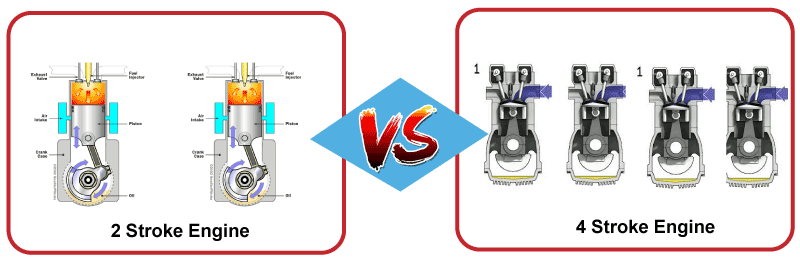
The stroke methods are listed below:The first is the ingestion stroke: The operation mechanism of a motor starts with the starting drive, as the piston is pushed downwards. Next, the combustion chamber is fed with a mixture of fuel/oxidizers through the intake valve. Compression is the next stroke: What starts going down must come back. It happens when the piston provides stability on the cylinder following a pressure stroke. The intake valve, the deposited fuel, and air molecules are compressed when the piston reaches the peak of the burning process. Combustion is the third stroke: It is the place where power is produced. First, the fuel pump ignites the compressed fuels until the piston hits the tip of the cylinder. Then, it causes a minor explosion within the combustion process, which allows the piston to return to its original position. Exhaust is the final stroke: The engine pulls the piston up and allows the release valve expel burnt exhaust gasses from the combustion process, which completes a combustion efficiency of four-stroke. 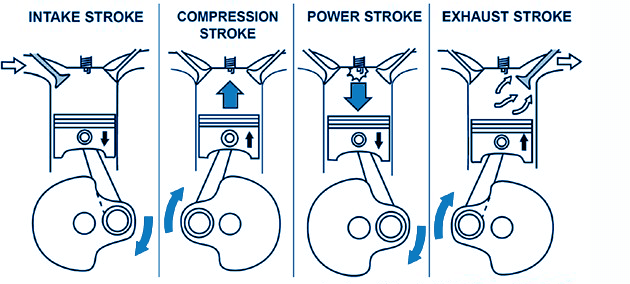
Let's consider an example of the boat owner who envisioned buying a new outboard engine to wonder about the disparity between a 2-hour and 4-hour outboard engine. Many believe a two-stroke is less efficient and less attractive, but it is not true. All two and four stroke engines have their own benefits and inconveniences. So, the interests, expectations, and the boating style of prospective buyers determine which outboard engine is the best option for them. The 2-Stroke engine: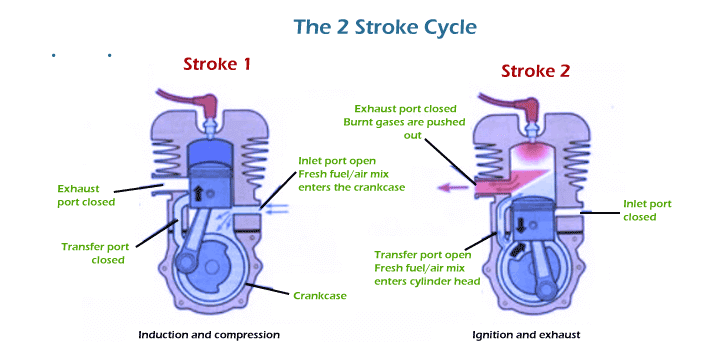
A 2 stroke engine is also compressed, driven, and drained in the same way as the 4-stroke engine, but it has only two strokes inside the piston, which are up and down movement of the piston. A two-hit motor is a motor with no valves and no lubrication mechanism specified. A two-stroke motor is fundamental, much easier than a 4-stroke motor. It is very light and has tiny working pieces. It means the maintenance is low and the production is also much cheaper. In a 2-stroke engine, the oil is combined with the gasoline in a particular ratio. 2-stroke machinery is checked. But, because it is not a prescribed lubrication device, these engines generally wear out faster. How it functions:
2-Stroke Motor Pros:
Two-stroke engine disadvantages:
4 Stroke Engine: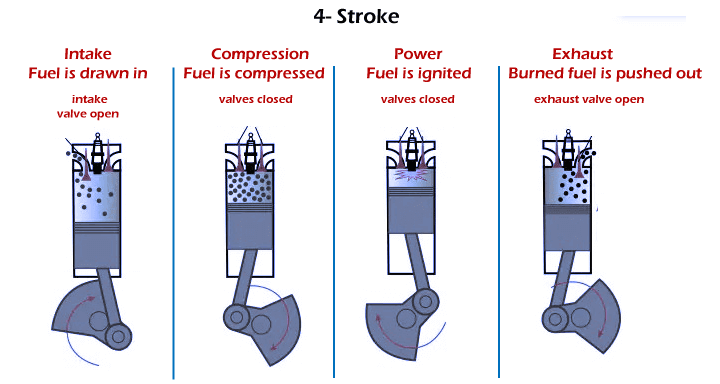
A 4-stroke engine has a 4-cycle, with the piston going twice through the motor, igniting the spark plug every other turn. It is bulky and must stay straight to function. It does not work so well with lawn machineries like weed eaters or chainsaws. A 4-stroke motor works by four different strokes or cylinder cycles. Intake/Address Stroke: The cylinder is moving the piston down. In the engine for combustion, gasoline, and air. Near to the fuel inlet of the cylinder opening valve (es) and exhaust valve(s). Compression Stroke: The column pushes up the cylinder, and the fuel/air combination is squeezed, both with input and exhaust gas closed. Fuel/air combination: With its exact timing, it forces the piston to fall off the cylinder and, even in the process, generates motor power for the vehicle. Exhaust Stroke: The final output is achieved by closing the intake valve(s) and opening the exit valve(s). 4-hour engine advantages: Pros
4-time engine disadvantages:
Difference between the four and two Stroke Engine?While four-stroke and two-stroke engines contain similar parts, they do not operate in the same manner. Heavy outdoor equipment uses four-stroke engines.
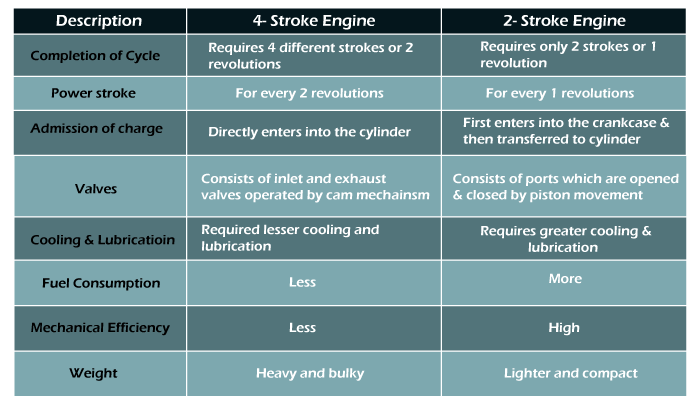
Businesses create strong 4-cycle or 4-stroke motors to make equipment more robust and efficient across the industry. 2-cycle or 2-stroke engines are running their tracks, but it appears that it won't be much longer before they entirely disappear.
Next TopicDifference between
|
 For Videos Join Our Youtube Channel: Join Now
For Videos Join Our Youtube Channel: Join Now
Feedback
- Send your Feedback to [email protected]
Help Others, Please Share










